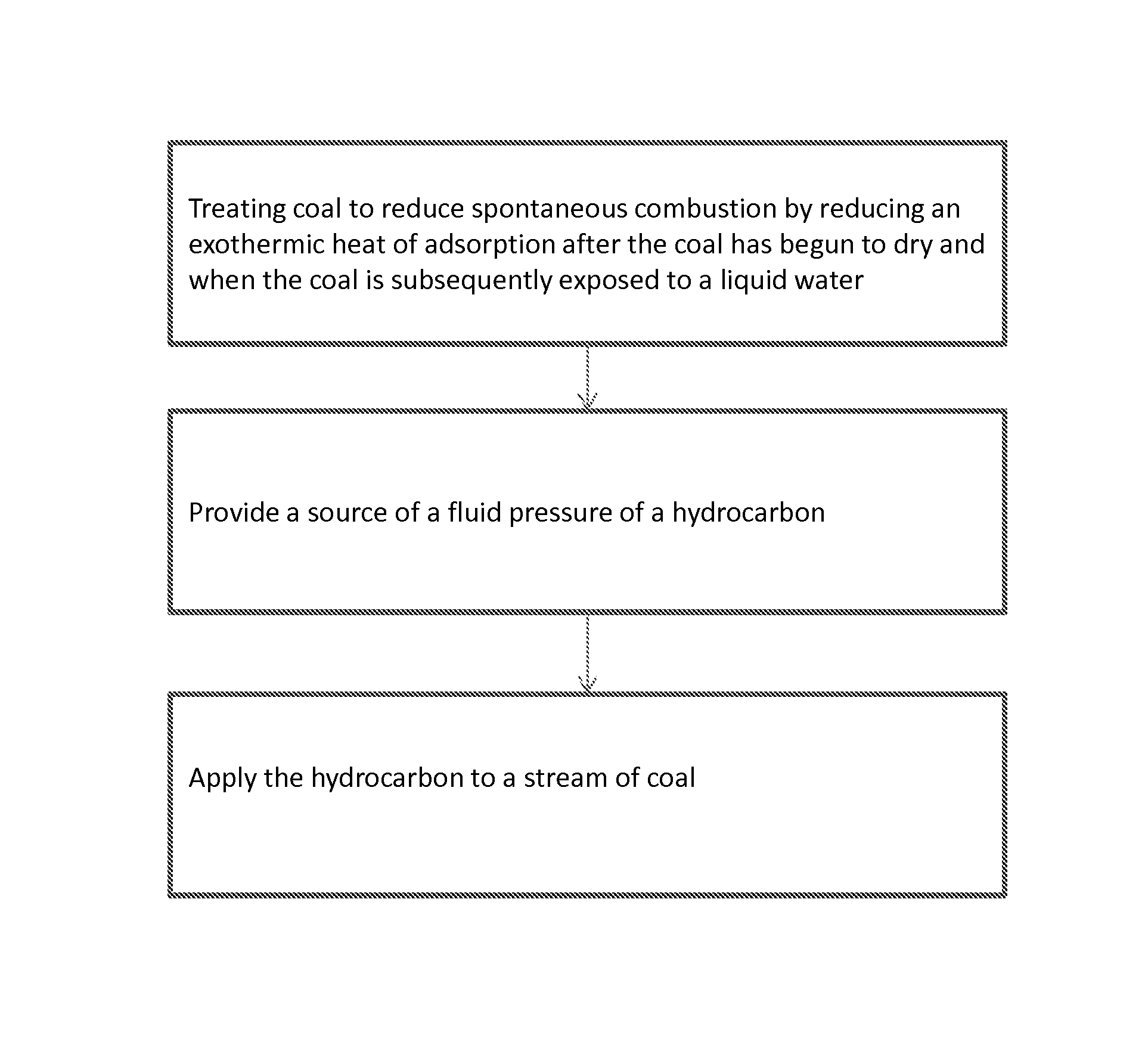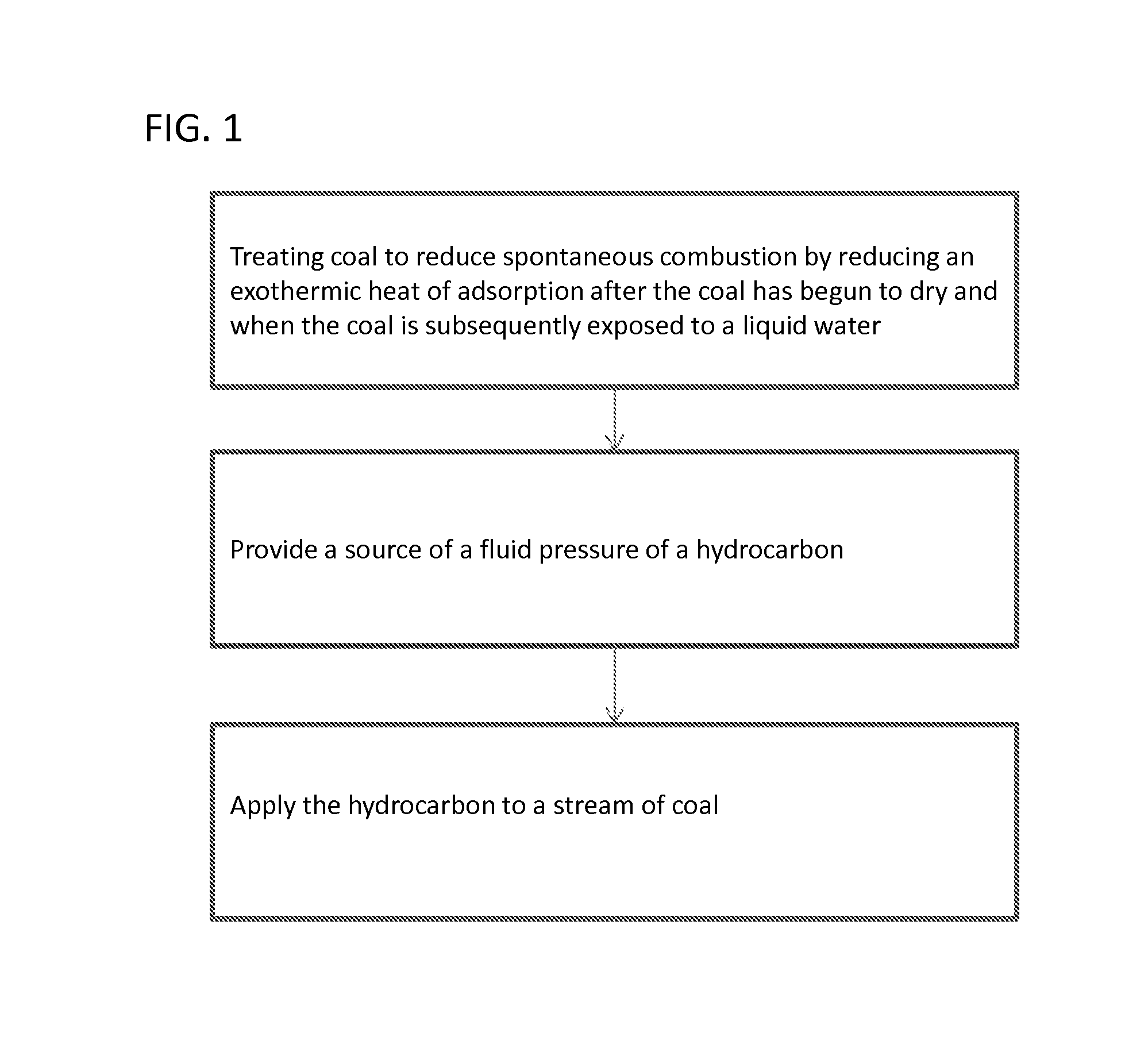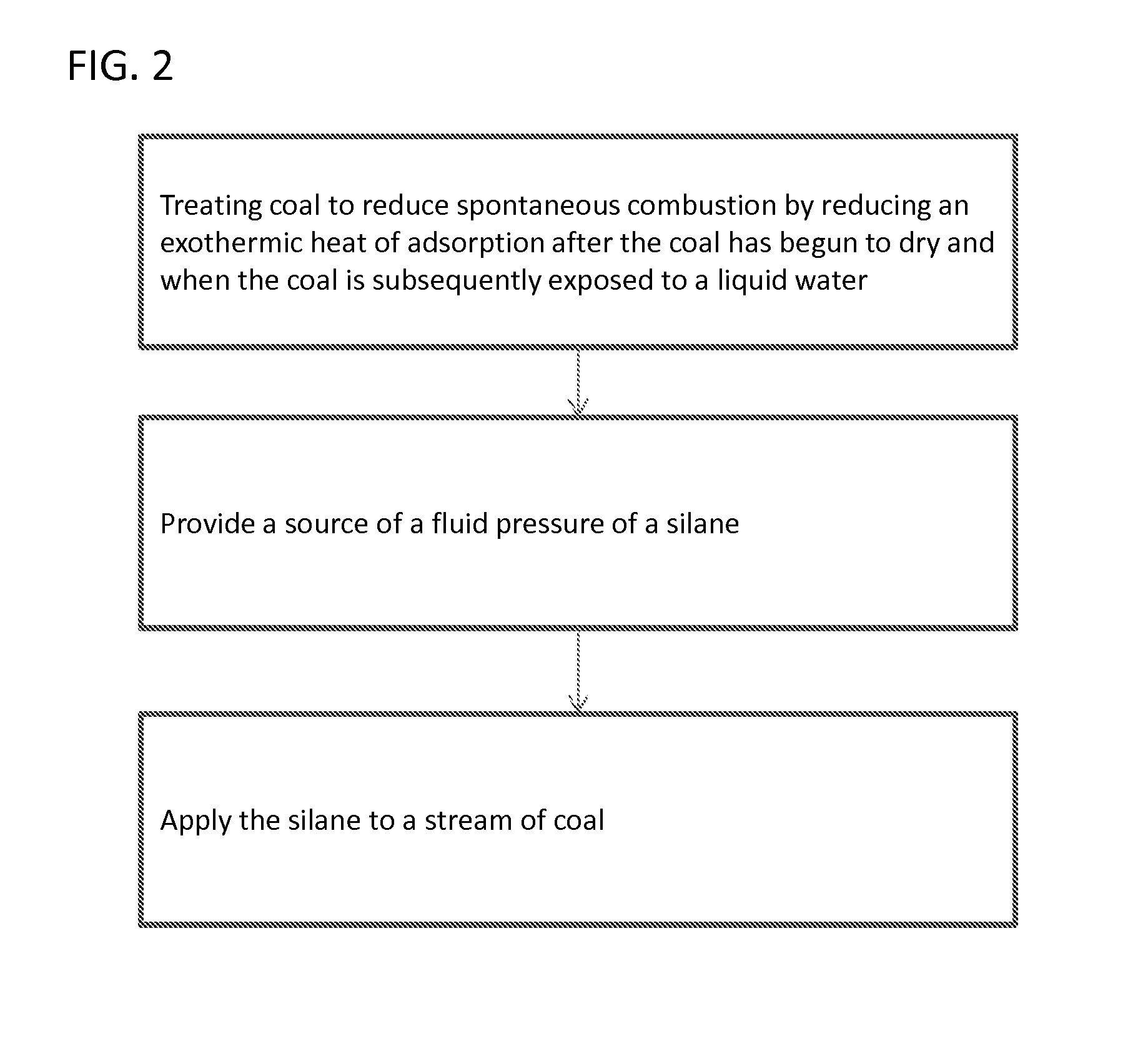Inhibition of Spontaneous Combustion in Low-Rank Coals
a low-rank coal and spontaneous combustion technology, applied in the direction of solid fuels, fuel additives, fuels, etc., can solve the problems of coal dust detonation, coal dust detonation, and utilities to shut down, so as to improve the net energy content of fuels and reduce self-heating of coal
- Summary
- Abstract
- Description
- Claims
- Application Information
AI Technical Summary
Benefits of technology
Problems solved by technology
Method used
Image
Examples
example 1
Heat of Wetting
[0037]To examine the heat of water adsorption and determine whether a surface treatment could affect this, freshly-produced coal particles were sieved, and a fraction between 18 and 60 mesh was isolated. The coal was treated with a variety of agents and then dried at 40° C. overnight, or, in some cases, for several days. A one liter vacuum dewar flask calorimeter containing a magnetic stir bar, thermocouple, and 100 grams of deionized water was assembled and allowed to come to equilibrium. The thermocouple was attached to a data recorder sampling at one data point per second. Twenty grams of the treated coal was then added to the calorimeter with stirring and the thermocouple was used to vigorously mix the coal into the water insuring complete wetting over a period of five to ten seconds. The temperature of the water and coal mixture was monitored and after between five and twenty minutes the temperature was extrapolated back to the point at which the coal was added. ...
example 2
Perk Tests
[0040]Approximately 30 kg of <5.08 cm coal was treated with the indicated treatment (see Table 2), divided into three approximately equal portions and allowed to dry for four days. All treatments added a total of approximately 4% by weight of water solution to the coal. The portions were divided in four and each portion in four parts was loaded into a separate tared 15.25 cm diameter translucent schedule 40 PVC tube that was closed at one end with a cotton cloth. The combined sample plus tube was re-weighed and the weight recorded. The coal filled the tube to a depth of 61 to 66 cm. Approximately 8.8 kg of water were poured into the top of the tube and the time it took to run out was recorded. The tube was then re-weighed and the coal was poured out of the tube and examined. In spite of the large amount of water that was poured through the coal sample, the majority of the mineral oil emulsion treated coal was still dry. The experiment was repeated five days later, that is,...
example 3
Large-Scale Test
[0044]Approximately 75,000 short tons of freshly mined Powder River Basin (PRB) coal were treated at an average rate of 0.8 lbs of coal tar per ton (330 grams per metric ton) using a coal tar emulsion. During the application, and subsequent to it, the coal was subjected to 43-63 cm of rain as it was treated then transported via open barge to an ocean freighter. On loading the average coal temperature was 33° C. During transport across the Atlantic Ocean, the ship's captain pumped off 700 short tons of water from the hold, indicating that the treated coal was shedding surface water. This was an unusual occurrence—generally coal will not shed water during transport. Upon unloading the average coal temperature was 31° C. It was clear that in addition to shedding water the coal had not experienced self-heating. The coal was stacked out at the receiving dock and the temperature was monitored for five days:
TABLE 4Temperature of Stacked-Out Treated CoalTreated coalCompariso...
PUM
 Login to View More
Login to View More Abstract
Description
Claims
Application Information
 Login to View More
Login to View More - R&D
- Intellectual Property
- Life Sciences
- Materials
- Tech Scout
- Unparalleled Data Quality
- Higher Quality Content
- 60% Fewer Hallucinations
Browse by: Latest US Patents, China's latest patents, Technical Efficacy Thesaurus, Application Domain, Technology Topic, Popular Technical Reports.
© 2025 PatSnap. All rights reserved.Legal|Privacy policy|Modern Slavery Act Transparency Statement|Sitemap|About US| Contact US: help@patsnap.com



